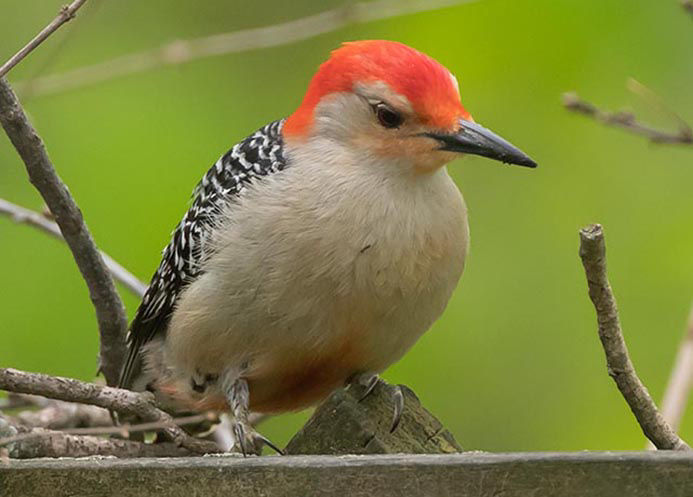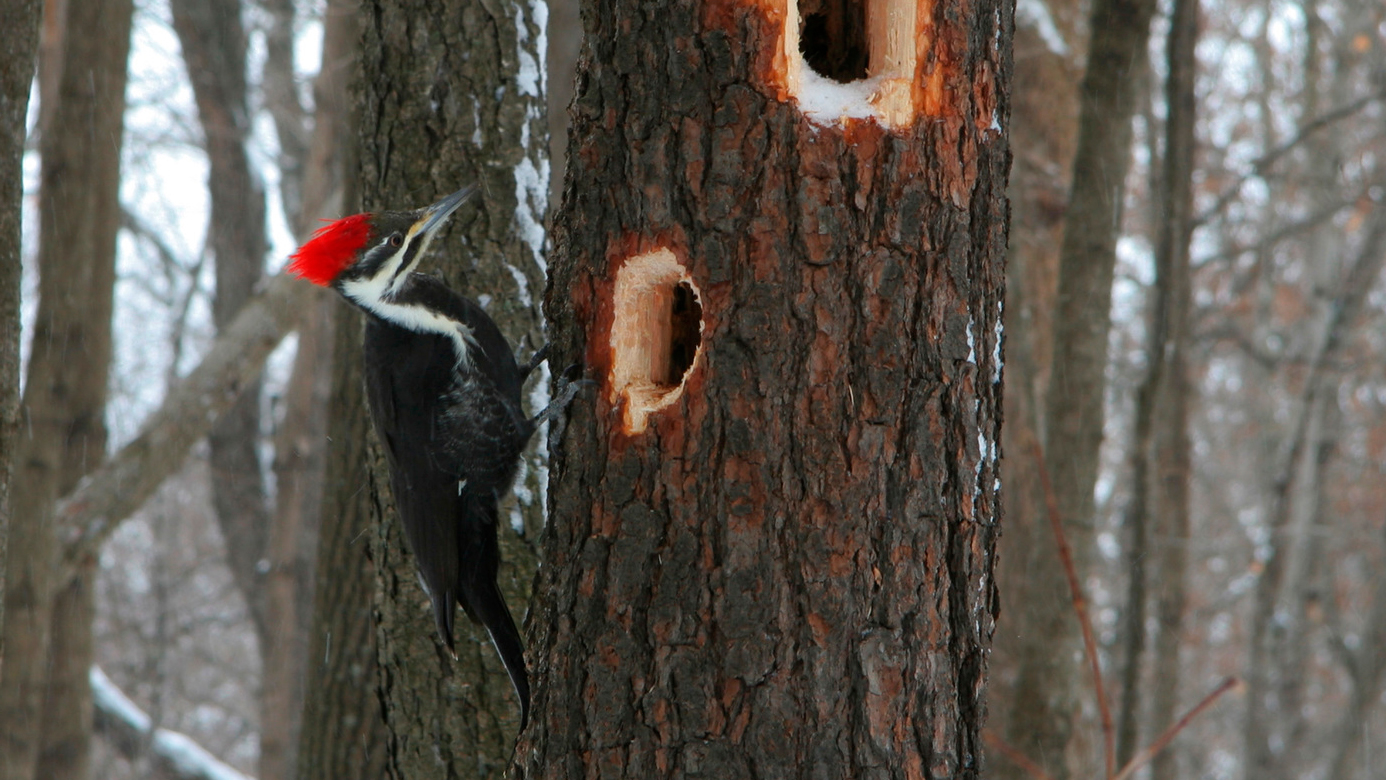Experiencing Woodpeckers in Florida: Variety Diversity and Recognition
Experiencing Woodpeckers in Florida: Variety Diversity and Recognition
Blog Article
Woodpeckers: A Comprehensive Overview to Recognizing These Special Birds
Woodpeckers, with their unique behaviors and physical attributes, have actually long mesmerized the inquisitiveness of ornithologists and nature enthusiasts alike. From their balanced drumming echoing with the timbers to their impressive adjustments for scaling tree trunks effortlessly, these birds provide a fascinating research in avian biology. However, what really sets woodpeckers apart is not simply their striking look yet additionally their important function in maintaining the fragile equilibrium of communities. As we explore the intricate composition, varied types, and eco-friendly value of woodpeckers, a deeper admiration for these special birds and the enigmas they hold unravels.

Woodpeckers' Drumming Habits
Woodpeckers display a balanced and exact drumming actions that serves different crucial functions in their lives. This habits is mostly associated with communication, area defense, and foraging. The distinct drumming audio is developed by the quick pecking of their beaks against difficult surfaces such as tree trunks, branches, or also steel items.
Communication is a vital facet of woodpecker habits, and drumming plays a considerable function in this process. Woodpeckers make use of drumming to establish their existence, draw in mates, and preserve call with their companions and children. The regularity, strength, and period of drumming series share particular messages to various other woodpeckers in the location.
Along with interaction, woodpeckers make use of drumming behavior for region protection. Woodpeckers in Florida. The loud and repeated drumming offers as an alerting to potential intruders, signifying that the area is currently claimed. By establishing their region through drumming, woodpeckers minimize the likelihood of conflicts over useful resources such as food and nesting sites
In addition, woodpeckers also utilize drumming as a foraging strategy. The rhythmic pecking aids them situate bugs hiding below the bark of trees by developing resonances that interrupt the prey's camouflage. This habits showcases the adaptability and ingenuity of woodpeckers in utilizing their drumming abilities for several essential purposes.
One-of-a-kind Adjustments for Tree Climbing
Having understood the art of drumming to interact, defend area, and forage, woodpeckers have developed special adjustments that promote their exceptional climbing up abilities in their arboreal habitats. One key adjustment is their specific feet. Woodpeckers have zygodactyl feet, with 2 toes aiming onward and 2 toes directing backwards. This plan supplies a solid grip on the upright surface areas of trees, permitting them to stick effortlessly while foraging for pests or drumming. Additionally, woodpeckers possess tight tail feathers that work as a prop to sustain their bodies as they climb up. These tail feathers offer security and balance, allowing woodpeckers to steer up tree trunks with precision and dexterity.
In addition, woodpeckers have effective neck muscle mass and an one-of-a-kind head framework that help in their climbing up abilities. Their solid neck muscle mass permit them to swiftly eat tree bark without experiencing whiplash, while their thick head and little mind function as shock absorbers, safeguarding them from the effect of duplicated drumming. These adaptations jointly make it possible for woodpeckers to navigate the vertical world of trees with effectiveness and grace.

Function of Woodpeckers in Communities
Playing a pivotal function in woodland communities, woodpeckers contribute dramatically to the balance and health of their habitats through their distinct habits and communications with other species. Among the key eco-friendly functions of woodpeckers is their function in managing insect populations. By foraging for bugs under the bark of trees, woodpeckers aid regulate bug populaces, avoiding break outs that could damage the general health of the forest. Additionally, woodpeckers create cavities in trees that work as important nesting websites for a selection of various other bird types, promoting biodiversity within the ecosystem.
In addition, the drumming and articulations of woodpeckers play a vital duty in interaction and territory establishment. These sounds not just serve to bring in companions yet also aid define borders between different woodpecker areas, minimizing disputes and advertising an unified coexistence within the forest neighborhood. Generally, the existence of woodpeckers in woodland ecosystems highlights Full Article their importance as keystone varieties, affecting the dynamics and working of these environments in diverse hop over to these guys means.
Anatomy: Specialized Beaks and Feet
In the detailed internet of woodland ecological communities, the specialized beaks and feet of woodpeckers are crucial adjustments that enable them to accomplish their critical ecological functions. Woodpeckers have one-of-a-kind physiological functions that are specifically made to assist them in their foraging and nesting habits.
One of the most distinguishing characteristic of woodpeckers is their strong, chisel-shaped beaks. These beaks are flawlessly adjusted for drilling into timber to reveal insects, larvae, and sap surprise under the bark of trees. The solid muscles and durable framework of their beaks enable woodpeckers to eat a rate of up to 20 times per secondly without causing damages to their heads.
Additionally, woodpeckers have actually specialized feet that help in their acrobatic climbing up abilities. Their next feet have 2 toes pointing onward and 2 toes pointing backward, supplying a solid hold on upright surface areas (Woodpeckers in Florida). This one-of-a-kind foot setup, in addition to tight tail feathers that serve as a helpful prop, allows woodpeckers to hold on to tree trunks and branches effortlessly while they look for food or dig deep into nesting tooth cavities
Woodpecker Variety Variety
What elements contribute to the remarkable variety of woodpecker varieties across various habitats and areas? Woodpeckers are a varied group of birds found across various ecosystems worldwide, with over 200 well-known types exhibiting adaptations to various environments. One vital factor driving this variety is the availability of appropriate habitats. Woodpeckers have progressed to populate a range of environments, from woodlands and forests to meadows and deserts, each offering special difficulties that have actually influenced the development of distinct woodpecker species.
Another adding variable to woodpecker varieties diversity is their specialized feeding habits. Various types have advanced to make use of numerous food resources, such as pests, tree sap, fruits, and nuts, causing the growth of certain adjustments in beak form, dimension, and strength. These adjustments allow woodpeckers to forage efficiently in their corresponding habitats, reducing competitors amongst types and advertising specific niche differentiation. Additionally, geographic isolation and historical factors have played a duty fit the distribution and variety of woodpecker types, bring about the broad variety of specialized adjustments seen in these interesting birds.

Verdict
In verdict, woodpeckers are remarkable birds that exhibit special drumming habits, specialized adjustments for tree climbing, and play essential roles in communities. With a varied variety of woodpecker species discovered worldwide, these birds are essential for maintaining the health and balance of woodlands and timberlands.
Report this page